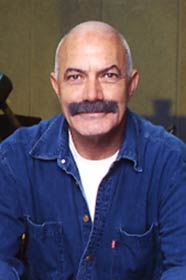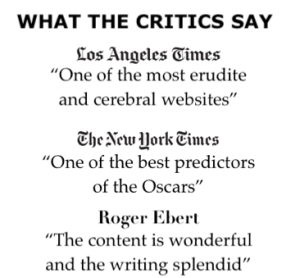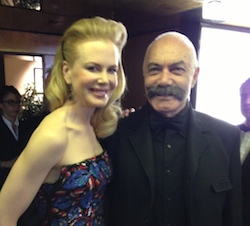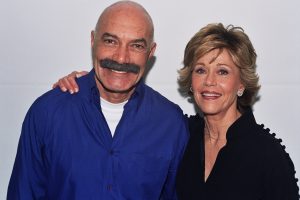Research in progress
Sep. 8, 2025–2,168 words
Film Theory: IDEOLOGY
For Karl Marx, the concept of ideology referred to the ideological components of all bourgeois institutions and modes of production.
However, recent film scholars and critics have followed Althusser for whom ideology is a series of representations and images, reflecting the conceptions of “reality” that any society assumes.
Ideology thus is no longer limited to beliefs that people consciously hold, but to the myths that a society lives by, myths that refer to some natural, unproblematic “reality.”
The text not only objectifies the ideological, but effects a more emphatic distance from it–a “break” which, in turn, forces the ideological into conspicuous view.
Comolli and Narbony:
To differentiate the text’s specific relation to the ideology it produces in form and content.
7 category classification of film types.
How films adhere or depart from predominant expressions of ideology.
A zero degree state of textual politics.
Films that act only as conduits for or perpetuators of existing ideological means, both in content and form.
Content: They salute the institutions and premises that define the “American Way.”
Form: Accepting the conventional system of depiction on the cinema (mainstream).
(End of Comolli and Narboni)
For an interesting discussion of ideology, see Bill Nichols, Ideology and the Image, Bloomington: Indiana University Press, 1981.
What matters more, the apparent subversion of dominant ideology, or the restoration of it?
That’s a dilemma for film theory and film practice.
Rosalind Coward and John Ellis:
“Ideology is not a slogan under which political and economic interest of a class represents itself.
It is on the way in which the individual actively lives his or her role within the social totality.
It therefore participates in the construction of that individual so that he or she can act.”
Whiteness
Ideology-critique
Cornel West: “a genealogy of the decline of Eurocentrism and white supremacy.
A history that supports current political practice.
Whiteness as a historically constructed ethnic or cultural identity.
Established oneself as white, whiteness requires continual effort to sustain.
In the past, whiteness had been a universal rather than particular identity.
Being white: white values and status was the standard of humanism in general to which others aspired and in relation to which they were judged. (Eric Lott, ch. 18).
Popular culture and ideology
Popular culture does not simply reproduce dominant ideology. But the ideological agenda of any given historical era (the debates and contradictions that lie within and beneath ideology) can be read symptomatically in cultural products, including Hollywood movies, especially mainstream ones.
Every film, even the most commercial and lightly entertaining studio fare (Disney pictures), is also political and ideological.
The capacity of film to articulate the contradictions of middle-class society and at the same time to reeanct middle class ideals.
An encounter with the spheres of private and public life, which emulates and problematizes the division of privatye and public, a division based on oppositions of gender and class.
Movies have xtraordinary power–unmatched by any other medium–to convey vividly what’s right and what’s wrong, good and evil.
The movies are still the best way of giving body, flavor, emotion to the absractions and puzzlements od social and political crises (Denby).
Take the 1990 smash hit romantic comedy, Pretty Woman, which catapulted Julia Roberts to major Stardom.
Loosely based on the Pygmalion myth (which was used in several plays and films), Gary Marshall’s Pretty Woman is on the surfer a romantic feature about the love affair between a rich but detached businessman (Richard Gere) and a good-hearted, ditzy prostitute (Julia Roberts). At first, she is hired as a a paid escort, sort of a companion.
Feminists critics claim that this was yet another case of Hollywood’s male supremacy, reducing the heroine to a sex object, a passive femme who needs to be elevated-saved-rescued by prince charming (a re-working of another mythic fable, Cinderella).
Ideology is the complex of images and ideas that individuals have of themselves.
The ways they assent to or deny their time, place, social class, political structure.
But the term of ideology is fraught with connotations of manipulation, single-mindedness, adherence to a political POV.
At any given historical time, every culture has dominant ideology, a value system. Ideology becomes part of the means of interpreting the self and other in the world
Ideology is reflected continually in the popular media (film, television), politics, religion.
But ideology is never, anywhere, monolithic; it’s full of contradictions, or cracks.
Ideology perpetually shifts and modifies itself, as struggles between various forces within the culture continue and conditions and conflicts develop.
In Malcolm Bradbury’s novel “Doctor Criminale (1992), the narrator describes himself as a liberal humanist, a chaotic mixture of tolerance, permissiveness, pragmatism, moral uncertainty, global anxiety, deconstructive skepticism.
Ideology: Left and Right
democratic vs. hierarchical
environmental vs. heredity
relative vs. absolute
secular vs. religious
future vs. past
Cooperation vs. competition
outsiders vs. insiders
international vs. national
sexual freedom vs. marital monogamy
The emergence of a popular new right, because the alternatives to he new right are dispersed and fragmented
American Film: Ideology
American film is both the carrier of dominant ideology and its reflector.
Occasionally, film is even arbitrator of the changes and shifts within ideology
Film supports dominant ideology when it presents itself as an unmediated reality.
It’s entertainment, while it reinforces accepted notions of love, heroism, family
In the late 1960s and early 1970s, some films questioned dominant ideology and accepted notions and assumptions
More directors became more independent, more in control of their work.










